How to avoid overeating: Tips on portion size from a nutritionist
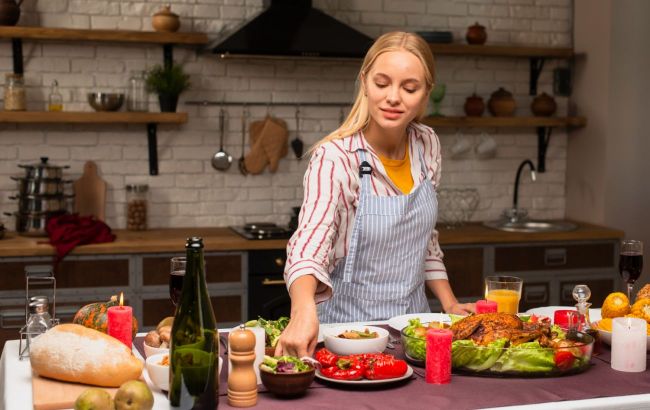 What should be the portions (photo: Freepik)
What should be the portions (photo: Freepik)
The size of the portion determines whether a person receives all the necessary nutrients. However, constant overeating leads to gaining extra weight, which negatively affects health. Nutritionist Anastasiia Holoborodko on Telegram advises how to determine the correct portion sizes of various dishes.
Determining portion size
"By learning to visually assess portions, you'll establish a better relationship with food and make weight control easier. Portion size is the amount of food from a particular group that you eat in one meal. The classic measurement is a standard 250ml cup," says the expert.
Below are portion sizes for various foods. The sizes are calculated for an average-sized adult with moderate, but regular physical activity.
Grains, pasta, seeds
A portion of gluten-free seeds (quinoa, amaranth), grains (wheat, buckwheat), pasta, and quinoa-amaranth is 1 cup. It fits in the palm of an adult's hand as a loose pile. You can also visualize the size of a tennis ball.
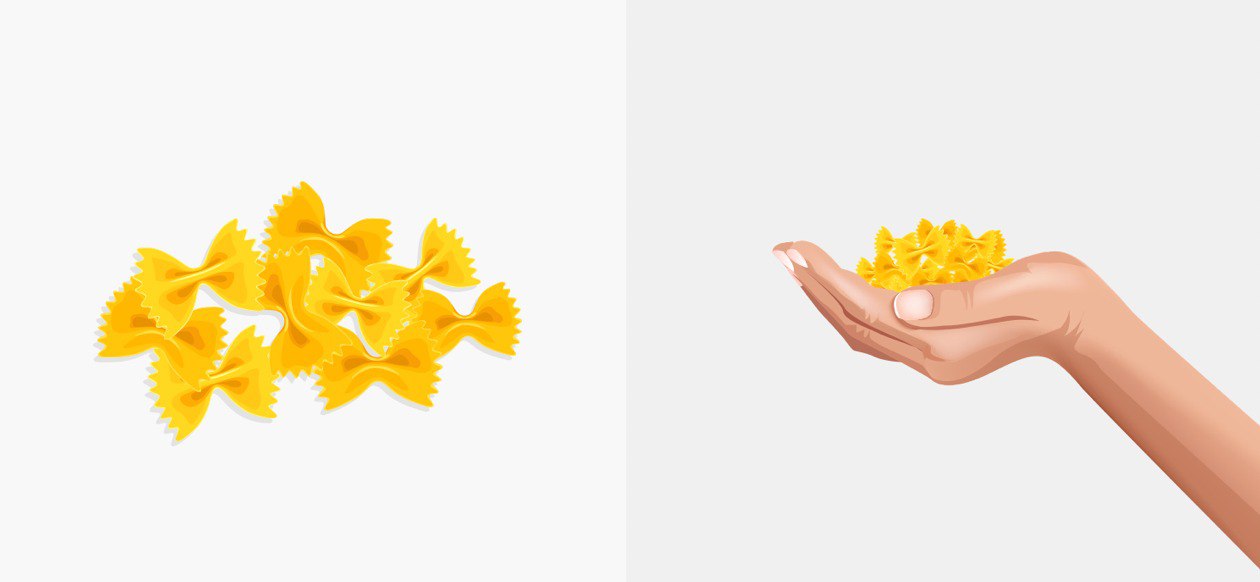 1 handful of pasta, cereals or seeds - a portion for an adult (photo: t.me/anagoloborodko)
1 handful of pasta, cereals or seeds - a portion for an adult (photo: t.me/anagoloborodko)
Nuts
Granola or a mix of nuts and seeds, the base for porridge salad - ¼ cup. A quarter cup is a size that barely covers the center of an adult's palm.
A nut and grain base, a mix of nuts and seeds, hemp hearts, and cocoa nibs are recommended to use as an addition to sweet smoothie bowls or as a base for savory ones. You can mix them with gluten-free porridge or enjoy them as a standalone dish with coconut and soy yogurt.
_1.jpg) A portion of nuts should cover the center of the palm (photo: t.me/anagoloborodko)
A portion of nuts should cover the center of the palm (photo: t.me/anagoloborodko)
Dried fruits
The recommended portion of unsyruped dried fruits is ¼ cup or 40 grams. The serving should cover the center of your palm and be used as additions to porridges and salads, occasionally as a standalone healthy snack. Avoid dried fruits and candied fruits soaked in sugar or syrup.
_1.jpg) A portion of dried fruit should cover the center of the palm (photo: t.me/anagoloborodko)
A portion of dried fruit should cover the center of the palm (photo: t.me/anagoloborodko)
Fresh fruits
The size of a medium fruit portion is similar to the size of a fist. It is recommended to consume 3-5 portions per day (i.e., 3-4 apples or pears / 2 cups of berries, guava, mango, or banana / pineapple / 4 kiwis / 2 oranges and grapefruits). Ideally, these should be 3-4 different fruits per day.
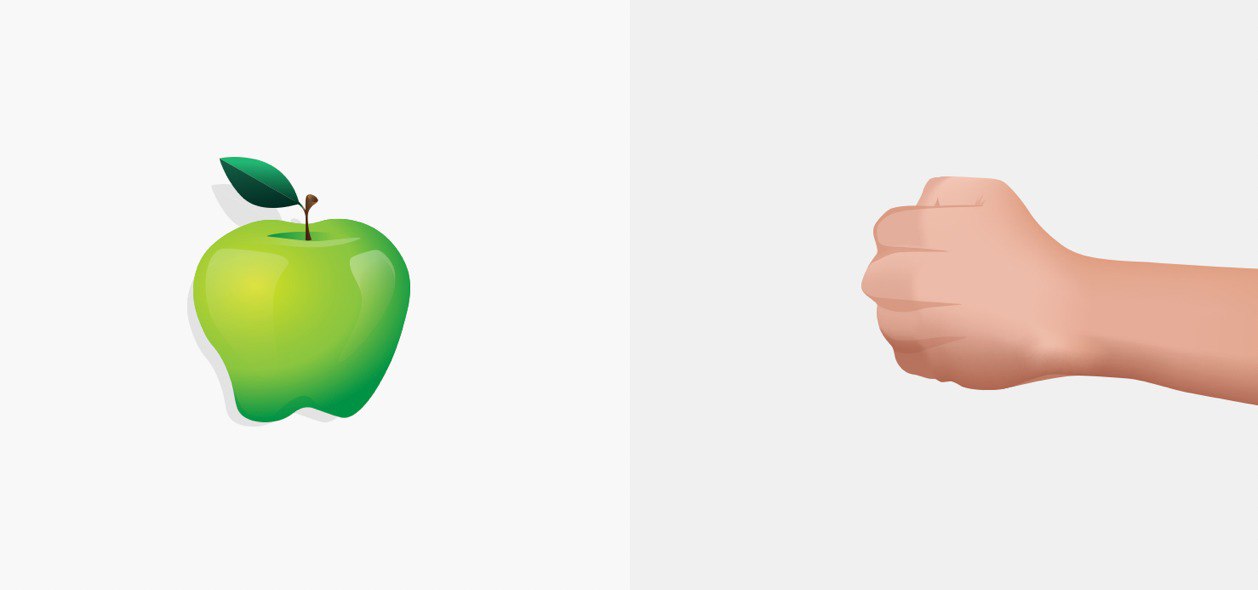 You need to eat 5 fist-sized portions of fruit or berries (photo: t.me/anagoloborodko)
You need to eat 5 fist-sized portions of fruit or berries (photo: t.me/anagoloborodko)
Leafy greens
A serving of leafy greens - such as iceberg lettuce, romaine, spinach, or arugula - should be about 2-3 cups or 2 handfuls.
"The minimum portion of fresh salad per day is 1 cup. However, this is precisely the situation where dietitians boldly recommend doubling or tripling the portion without fearing the consequences. A serving size of 2 cups is something that can be grabbed with both hands at once," says Holoborodko.
_1.jpg) A portion of greens should be the size of two palms (photo: t.me/anagoloborodko)
A portion of greens should be the size of two palms (photo: t.me/anagoloborodko)
Non-starchy vegetables
A serving of non-starchy vegetables should be about 1 cup or a full handful. Non-starchy vegetables include: cucumber, tomato, cauliflower, broccoli, onion, asparagus, bell pepper, mushrooms.
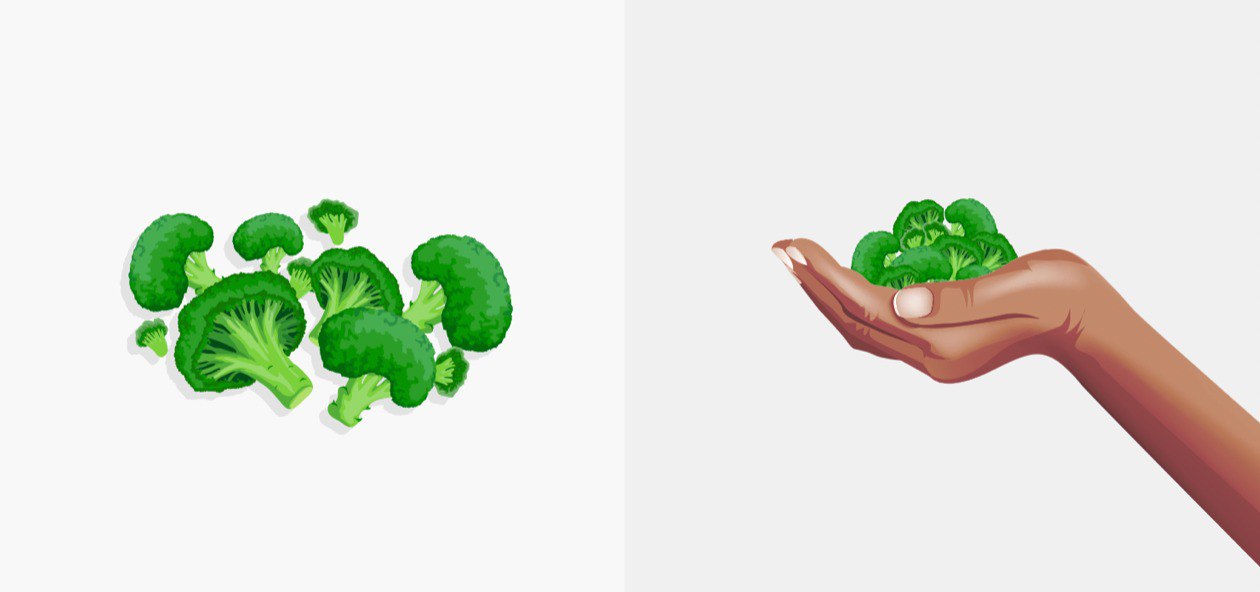 A portion of non-starchy vegetables - one handful (photo: t.me/anagoloborodko)
A portion of non-starchy vegetables - one handful (photo: t.me/anagoloborodko)
Starchy vegetables
A serving of starchy vegetables should be 1 root vegetable or nearly a full cup. Starchy vegetables include: sweet potato, corn, beetroot, and other root vegetables, pumpkin, peas.
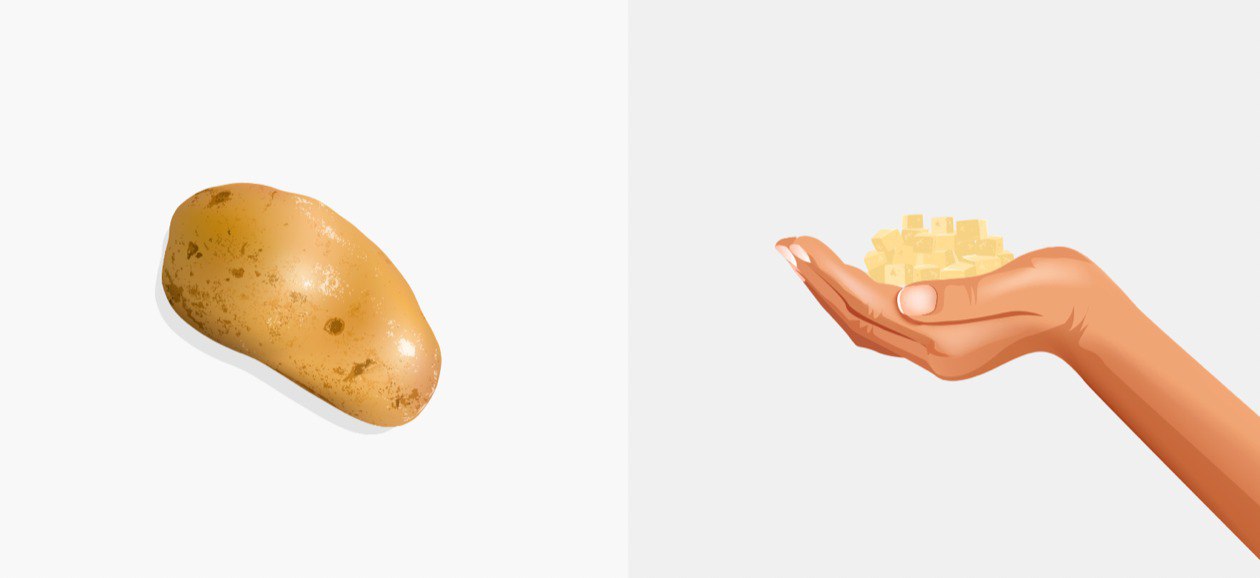 Portion of starchy foods - one cup (photo: t.me/anagoloborodko)
Portion of starchy foods - one cup (photo: t.me/anagoloborodko)
Meat, Poultry, and Fish
A serving of meat, fish, and poultry should be 100 grams or about the size of your palm. It's advisable to opt for lean products such as chicken or turkey fillet, fish, boiled beef, and seafood.
_1.jpg) A portion of fish and meat should be the size of a palm (photo: t.me/anagoloborodko)
A portion of fish and meat should be the size of a palm (photo: t.me/anagoloborodko)
Cheese
A serving of hard cheese should be 45 grams or about the size of your index finger. Despite its nutritional benefits, the recommended portion for cheese is small due to its high calorie content - it's best to limit yourself to a piece the size of your index finger. Portions of young and soft cheeses can be increased by one and a half times. Cheese can be added to salads and cereals or eaten as a snack.
_1.jpg) A portion of cheese should be the size of an index finger (photo: t.me/anagoloborodko)
A portion of cheese should be the size of an index finger (photo: t.me/anagoloborodko)
Dairy Products
A serving of dairy products should be 1 cup or about the size of your fist. When choosing dairy products, consider their fat content, as it affects the calorie count and the appropriate portion size.
 (1).jpg) A portion of milk should be one cup (photo: t.me/anagoloborodko)
A portion of milk should be one cup (photo: t.me/anagoloborodko)
Below are some tips to adjust your diet based on your training volume:
- if you exercise for 2-3 hours per week - no adjustment is needed, your daily intake remains unchanged
- if you train for 4-6 hours per week - increase your intake of quality carbohydrates, proteins, and unsaturated fats by 5-10%
- if you exercise for 7-8 hours per week - increase your intake of protein (from fish, poultry, meat, eggs, tofu, or legumes) and whole grain cereals by 10-15%, and increase your fruit intake from 3-5 to 5-7 servings per day
- 9-10 hours per week - consult with a dietitian or at least a trainer
This material is for informational purposes only and should not be used for medical diagnosis or self-treatment. Our goal is to provide readers with accurate information about symptoms, causes, and methods of detecting diseases. RBС-Ukraine is not responsible for any diagnoses that readers may make based on materials from the resource. We do not recommend self-treatment and advise consulting a doctor in case of any health concerns.

